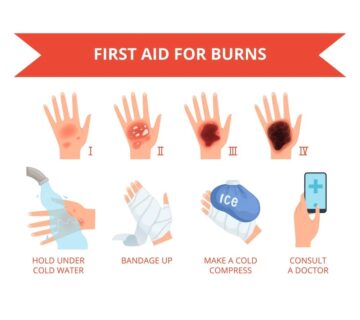History of Trita:
The beginning of the history of medicine in Iran actually dates from the period when the Parthians lived in their first hometown near Khwarazm, and the first Aryan doctor was called Trita or (Serita), which is actually like Asclepius for the Greeks and Aesculapius for the Romans. The writings of various books in Pahlavi show that Trita was also skilled in surgery. According to his servant: “Ahuramazda gave Trita a jeweler’s knife to perform surgery with.” Trita was fully aware of the medicinal properties of various plants and prepared their extracts with her own methods and used them in the treatment of patients. Regarding Trita in Yasna 9 and its paragraph 10, it is stated that “the third name who pressed the Heuma plant and prepared its extract was Trita from the family of Sam, who was the owner of two valiant sons, one of whom became Arvakhshiya and the other became Garshasab”.
Trita, the first Aryan physician
The name of Trita, this Aryan doctor, is not only preserved in Iranian medicine, but he is also known as the first Aryan doctor in the Indian region, and this shows that Trita lived in a period when the Aryans of India and Iran were not separated. Trita was the first Aryan physician. As stated in Vendidad Fargard, Chapter 20, Section 1-2: “Zoroaster asked Ahura Mazda: Who among the pious, the wise, the hard-working, the wealthy, the vociferous, the slanderous, the first to stop unhappiness, stop death, the wound of a spear?” Did it stop the birds, did it stop the heat of the fever from people’s bodies? Ahuramazda answered: O Spitman Zoroaster, Trita is the first among the pious, the wise, the hardworking, the wealthy, the slanderers, the slanderers, the pioneers, who stopped unhappiness, stopped death, stopped the spear wound, and stopped the heat of the fever. People stopped.”
Hum plant
The plant (heoma or hum in Avesta) is derived from the root of the squeezer. The herbal hum was probably the car, from which an extract with different properties was taken. This plant and its extract later took various forms and forms like God. It seems that the main growing place of the plant in question was probably Iran and not India. This plant was not abundant in India and was brought to that country from Iran.
Hum was found by Indra, the greatest army god in the Himalayas, and he offered it to the gods to use it to fight with the demons. In this way, Hum was offered to the gods as a heavenly potion, and later became an invigorating agent to fight with the demons. He embodied the role of a god without whom Indra was powerless. Hindus considered Hum to be the god of waters. In their eyes, the rotation of Hum was a symbol of the sky, a symbol of rain, and the sound that arose from its rotation was a symbol of lightning and thunder, and they considered it as a warming sunbeam and a means of carrying a herd of cows.
Hum is the deity associated with the moon
And at the same time, Hum is a god that is connected with the moon, because in ancient and naturalist ideas, the moon is considered the cause of rain. In the collection of the Vedas, there is a beautiful poem about Afshra Hum: “You are always refreshed and you, who are the flag of the days, walk in the lesson of the dawn, and while walking, we recommend the share of the gods among them. The results of the planet, the moon, we prolong the long life. Afshra Huma, the king of wars, you are that perfection and all, O Hilal, offer me perfection and completeness, so that I may be complete and complete in children, relatives, wealth, wealth, and honor.
Hmm, Lord of the regions of the world
Hum gives people not only happiness but also the power of thought and thought and wealth, the Aryans elevate Hum to the position of a provider and with interpretations such as the Lord of the regions of the world, the 4 regions of the sky according to the belief of ancient India, the owner of glory in the legal realm, the legal announcer of the truth and the expresser. They give faith and a lofty position. It is not a beautiful poem in the view of the ancient Aryans, which states: “O Huma, the winds are kind to you and the rivers are flowing, those fawn juices of a bright color rush, with the desire of the water of life, pour into the cows, and from these extracts, one day with the herd Give me that cow. Then flow with soul-giving joy and shoot deadly arrows at him who obstructs the flow of waters, flow with that shining color of thine. O Hm, flow in the passion of the cow. The heavenly rain, small, joyful, health-giving, and abundance upon us.”
Home in Avesta
Avesta has also dedicated an important part to this mythical and sacred plant as Hum Yasht. Hum Yasht is located in the Yasna and covers some of the ninth to eleventh areas. The 20th section of Avesta is also called Hom Yasht, but only a few stanzas of the main Hom Yasht can be seen in it. One of the functions of Hum mentioned in the Avesta is warding off death. In the hymns, the natural position is also described: holy, healer and ruler of the yellow herd, on the highest peak of Mount Hariiti, which is known as Hacker, he brought a ransom for that immaculate seal.
Home plant specifications
In fact, the color of this car plant is green and it grows in desert mountainous areas; Humm is a shrub about one meter tall with narrow, strapping stems. The stems of the hummock shrub will dry out when it has reached the end of its life.
The most important parts of the hum plant
The most important part of the plant is its stem, which is colorless and transparent in spring and dark brown in winter; And for this reason, it is called Hum Zareen in the village. The golden color of the stems is created when the plant is dried without being picked. The hum plant does not lose its green color even after being picked and turns yellow only when it dries up by itself. According to Avesta, Hum plant played an important role in the birth of Zoroaster. On the other hand, in the old beliefs of Iran, like the old beliefs of the land of India, Hum is a fighting god who uses his pill against the dragon of criminals and other demons.







بدون دیدگاه